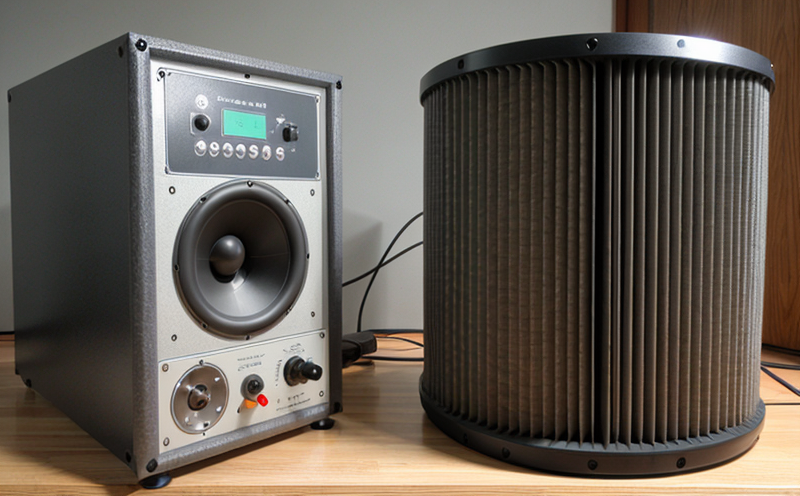ISO 20816-7 Vibration of Rotating Electrical Machines
The ISO 20816 series is a comprehensive standard that addresses the vibration testing and analysis of rotating electrical machines such as generators, motors, and synchronous condensers. Specifically, ISO 20816-7:2015 focuses on the measurement and evaluation of the operational vibration levels for these machines in their normal operating conditions.
This standard is particularly relevant for industries where precision and reliability are paramount such as marine engineering, power generation, and industrial machinery. The testing protocol described by ISO 20816-7 ensures that rotating electrical machines meet stringent performance requirements, thereby enhancing the overall operational safety and efficiency of equipment in demanding environments.
The measurement process outlined in this standard involves several critical steps to ensure accurate and repeatable results. First, a comprehensive analysis of the machine's design is conducted to identify potential vibration sources. This step ensures that all relevant parameters are considered during the subsequent testing phases. Once identified, the test setup includes mounting the machine on a suitable vibration measurement platform.
Next, the machine is operated under nominal conditions as specified by the manufacturer, with specific attention paid to operational speed and load. During operation, high-precision accelerometers are used to capture vibration data across multiple planes. The frequency range of interest typically extends from low-frequency components (such as 1X) up to higher harmonic frequencies.
After collecting initial data, a detailed spectral analysis is performed using advanced signal processing techniques. This step involves identifying dominant and sub-dominant peaks in the spectrum which may indicate specific mechanical issues or operational inefficiencies. The results are then compared against predefined thresholds established by ISO 20816-7 to determine compliance with specified limits.
Compliance ensures that machines operate within safe boundaries, avoiding potential failures due to excessive vibrations. This not only protects the integrity of the equipment but also minimizes risks associated with machinery failure such as unplanned downtime and costly repairs.
- Vibration Measurement: Utilization of accelerometers for capturing vibration data across various planes.
- Frequency Analysis: Identification of dominant peaks in the spectrum to diagnose potential issues.
- Data Comparison: Evaluation against ISO 20816-7 specified limits to ensure compliance.
The importance of this standard cannot be overstated, especially for organizations involved in critical infrastructure like power plants or marine vessels. By adhering to the stringent requirements set forth by ISO 20816-7, manufacturers and operators can significantly improve the reliability and lifespan of their equipment.
In conclusion, implementing ISO 20816-7 ensures that rotating electrical machines are tested under controlled conditions simulating real-world operating scenarios. This approach helps in identifying any latent defects early on, allowing for timely corrective actions if necessary. Ultimately, this leads to enhanced performance and longevity of the machinery involved.
Benefits
The adoption of ISO 20816-7 brings numerous advantages that positively impact various aspects of marine and ship equipment testing:
- Enhanced Reliability: By ensuring compliance with this standard, the reliability of rotating electrical machines is significantly enhanced. This reduces the likelihood of unexpected failures during critical operations.
- Cost Savings: Early detection of potential issues through vibration analysis prevents costly repairs and replacements that could arise from unforeseen equipment breakdowns.
- Improved Safety: Ensuring that machinery operates within safe parameters not only extends its operational life but also enhances the safety of personnel working around it. This is particularly crucial in hazardous environments like marine vessels where safety is paramount.
- Compliance with Industry Standards: Adhering to this international standard demonstrates a commitment to quality and ensures that the equipment meets the highest industry standards, thereby gaining competitive advantage.
In addition, ISO 20816-7 supports continuous improvement initiatives by providing a framework for ongoing monitoring and evaluation of machine performance. This proactive approach fosters innovation within organizations involved in marine and ship equipment testing, driving towards more efficient and effective solutions.
Quality and Reliability Assurance
The implementation of ISO 20816-7 plays a crucial role in ensuring consistent quality and reliability across all stages of product development and maintenance. Here are some key areas where this standard contributes to maintaining high standards:
- Vibration Monitoring During Development: Continuous monitoring during the design phase helps identify potential issues early, allowing for necessary modifications before production begins.
- Operational Stability: Ensuring that machines operate within defined limits guarantees consistent performance over time. This stability is vital in preventing fluctuations that could lead to operational disruptions or failures.
- Durability Testing: The standard also covers durability testing which simulates long-term use conditions, helping to predict the lifespan of equipment accurately.
- Performance Optimization: By adhering strictly to ISO 20816-7, manufacturers can optimize their products based on real-world data collected during tests. This leads to more efficient designs and better overall performance.
In summary, the adherence to ISO 20816-7 ensures that rotating electrical machines meet stringent quality standards throughout their lifecycle. From initial design phases right through to final installation, this standard provides a robust framework for maintaining reliability and enhancing operational efficiency.
Environmental and Sustainability Contributions
The testing protocols specified by ISO 20816-7 contribute positively towards environmental sustainability efforts in several ways:
- Reduced Resource Usage: Ensuring that machines operate efficiently reduces the amount of energy consumed, thereby lowering overall resource consumption.
- Emission Reduction: By preventing failures and optimizing performance, emissions associated with machinery are minimized. This is especially important in sectors like marine transportation where reducing carbon footprints is a key goal.
- Enhanced Efficiency: Through continuous monitoring and optimization based on test results, the energy efficiency of rotating electrical machines can be significantly improved. Higher efficiencies translate directly into reduced environmental impact.
- Lifecycle Management: The standard supports lifecycle management practices by providing clear guidelines for testing at different stages of a product's life cycle. This approach helps in extending the useful life of equipment, reducing waste and promoting recycling initiatives.
By integrating ISO 20816-7 into daily operations, organizations can contribute meaningfully to global sustainability goals while simultaneously enhancing their own operational excellence. The focus on quality and reliability fosters a culture of continuous improvement that benefits both the environment and business performance.





